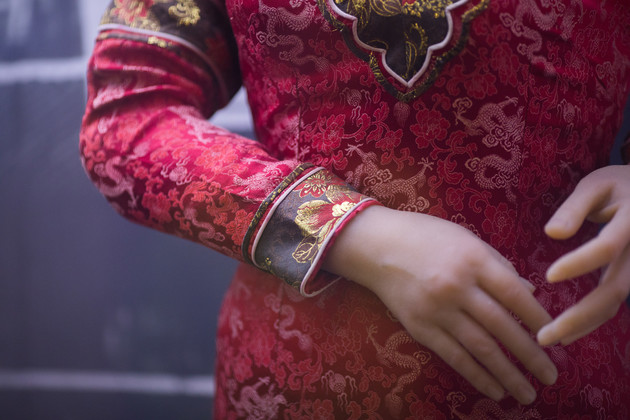
Photo/Shetuwang
Mar. 27 (NBD) -- The Palace Museum of China has more than 1.8 million pieces of treasure, but 99 percent are "sleeping" in the warehouse.
You might not have a chance to see these precious items in person, but owning a piece of clothing highlighting elements of the treasure is now a possibility.
"The Palace Revolution" series of clothing, a new derivative from The Palace Museum's intellectual property rights, hit the market in early March, with prices ranging from 399 yuan (59.4 U.S. dollars) to 1,299 yuan (193.5 U.S. dollars).
With the introduction of the clothing series that blends the oriental aesthetics with modern trendy design, the little-known culture of festive costumes, which emerged nearly 600 years ago, comes into the public view.
Festive costumes, specially designed for festive occasions, first appeared in the Ming Dynasty and formed a sub-category of the ritual costume system in the Qing Dynasty.
"I still feel excited," Li Wei, manager of designer brand Awaylee, said when referring to her involvement in the design of the festive costumes.
When invited to design "The Palace Revolution" series, she felt strong pressure at the very start, racking her brains for a way to balance the message conveyed by festive costumes and preferences of young people.
"Simply adding Palace Museum elements is absolutely far from enough," Li said. Products developed in this way are nothing but souvenirs as they not only lack innovation but don't carry the rich connotation of the Palace Museum buildings or collections.
Out of more than 10,000 elements, she finally decided to integrate palace paintings and architectural elements into her designs.
In recent years, designs incorporating traditional Chinese elements were increasingly seen on the runways. For example, Louis Vuitton has designed a Woven Leather Plaid Laundry Tote, under the inspiration of woven plastic bags that could be found almost everywhere in China. A dress by Gucci during the 2018 Spring/Summer Fashion Week is a simulation of the traditional dresses Chinese female students wore during the 1920s-30s.
Foreign designers often printed Chinese characters on their products. Some also used traditional auspicious patterns that often appear on ancient Chinese costumes, such as carps and ocean waves.
Cosmetics makers like YSL and toy manufacturers including LEGO have also jumped on the bandwagon.
But chinoiserie is not simply defined by whether Chinese characters, silk fabric, dragon pattern, embroidery or blue-and-white porcelain element are applied.
To come up with fascinating Chinese-style designs, designers should first fully understand and embrace the traditional Chinese culture from the bottom of the heart, and then enrich the understanding by learning oriental philosophies and aesthetic conceptions.
As long as the cultural connotation is fully embodied, a piece of linen could dazzle on international fashion stage after simple processes of printing, dyeing, and cutting.
More importantly, fashion should not be limited to a small group of people. Designers should also take into account average people's needs and attitudes towards life while designing details.
Email: lansuying@nbd.com.cn


 川公网安备 51019002001991号
川公网安备 51019002001991号





